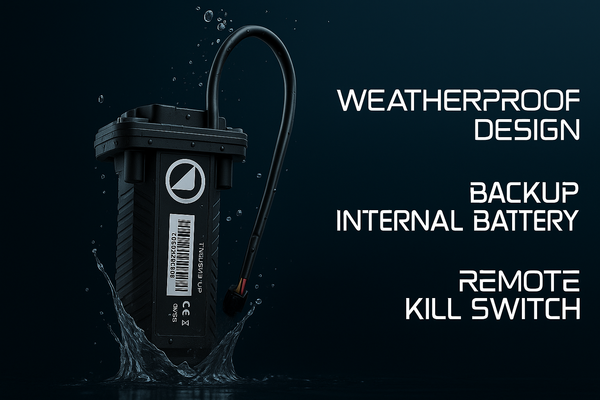Revolutionizing Tesla Fleet Management: Key Insights for Businesses in 2025
Tesla fleet management is evolving with new API pricing, real-time tracking, and mixed-fleet management challenges. Learn how FleetBold’s innovative solutions offer significant cost reductions and streamline Tesla fleet operations for businesses in 2025.

Introduction: Tesla Fleet Management in 2025 A Changing Landscape
Tesla’s growing presence in the fleet management and car rental sectors brings both opportunities and challenges for businesses. As we move into 2025, the future of Tesla fleet management is not only about adopting new technologies but also adapting to rapid changes in pricing, API access, and fleet management tools. Tesla’s API pricing has dramatically changed, introducing new challenges, especially for businesses relying on real time tracking, vehicle diagnostics, and automation.
Tesla’s fleet management has always been centered on using its API for vehicle tracking and diagnostics. However, with the new pricing structure, businesses are facing rising operational costs. Fleet operators, logistics companies, and car rental businesses are now forced to find innovative, cost effective ways to manage their Tesla fleets.
This blog delves into the most significant trends and challenges for Tesla fleet management in 2025, exploring the implications of Tesla’s new API pricing and offering actionable insights into how FleetBold’s telemetrics technology is revolutionizing fleet management by offering real time tracking, mixed fleet compatibility, and cost saving strategies.
1. Tesla’s API Pricing Shift is Reshaping Fleet Management
In January 2025, Tesla announced a major shift in their API pricing model, which directly impacts businesses that rely on the API for real time vehicle tracking, diagnostics, and automation. These pricing changes have created new financial pressures for fleet managers, who are now forced to pay per request for various data points, such as vehicle wake ups, data requests, and streaming signals.
Tesla’s API Cost Breakdown:
- Streaming Signals: $1 per 150,000 signals.
- Commands: $1 per 1,000 commands.
- Data Requests: $1 per 500 requests.
- Vehicle Wake ups: $1 per 50 wake ups.
This new pricing model means that fleet operators now face significant increases in costs for frequent or real time data requests. For businesses with large fleets that require high frequency data, these costs can quickly spiral out of control.
Why This Matters for Tesla Fleets:
- Higher Costs for Real Time Data: The new pay per use model increases the cost of accessing critical data, which impacts fleet operators’ ability to monitor Tesla vehicles in real time.
- Limited Access to Real Time Tracking: Businesses that rely on frequent vehicle data requests for tracking and diagnostics are finding it increasingly expensive to stay competitive.
- Increased Operational Expenses: Rental companies that previously used Tesla’s API for remote access and vehicle management are now struggling to justify the API’s high costs.
With rising costs and limitations on what fleet operators can afford to track, many are looking for alternatives that provide similar capabilities at a more affordable price point.
2. Real Time Tracking is Now a Requirement, Not a Luxury
In the fast paced world of fleet management, real time tracking has moved from being a luxury to a necessity. For fleet operators, especially those managing electric vehicle fleets, knowing the exact location of each vehicle and having the ability to monitor vehicle health in real time has become critical to reducing operational risks, improving efficiency, and optimizing fleet performance.
Key Benefits of Real Time Tracking for Tesla Fleets:
- Live Map Tracking: Fleet managers can track Tesla vehicles as they move in real time. This visibility enables them to make quick decisions, improve logistics, and ensure better resource utilization.
- Geofencing Alerts: Geofencing allows fleet operators to set up virtual boundaries for their vehicles. If a vehicle exits the designated area, an alert is triggered, helping prevent unauthorized use and reducing risks associated with theft or unauthorized detours.
- Energy Efficiency and Route Optimization: Real time tracking data can be used to optimize routes and reduce energy consumption, especially important for electric vehicle fleets. By identifying and avoiding inefficient routes, fleet managers can significantly lower operating costs.
Why Real Time Tracking is a Game Changer:
Real time tracking goes beyond basic location monitoring. It helps fleet operators:
- Improve Fleet Utilization: By being able to monitor all vehicles, fleet managers can optimize the use of their fleet by identifying underused vehicles and redistributing them to areas of higher demand.
- Enhance Security: Immediate alerts when a vehicle deviates from its planned route or when unauthorized use occurs significantly reduces the risk of theft or damage to vehicles.
- Boost Productivity: Fleet managers can make more informed decisions, reduce downtime, and plan better routes to ensure maximum operational efficiency.
FleetBold’s API is the first to provide real time Tesla tracking at a cost significantly lower than Tesla’s official API, making it an indispensable tool for businesses looking to stay ahead in the competitive fleet management market.
3. Fleet Managers Must Now Handle Mixed Fleets (Tesla + OEM Vehicles)
The modern fleet management landscape is increasingly about mixed fleets—a combination of Tesla electric vehicles (EVs) and traditional OEM vehicles. Many businesses today operate fleets that include both Teslas and other car brands. However, Tesla’s API only supports Tesla vehicles, forcing fleet managers to use separate systems for Tesla and non Tesla vehicles. This leads to inefficiencies and higher costs as businesses are forced to use multiple APIs and software systems to manage their fleets.
Challenges of Managing Mixed Fleets:
- Multiple Tracking Systems: Fleet operators have to deal with different systems for tracking Tesla and non Tesla vehicles, making it more difficult to monitor performance, location, and usage across the entire fleet.
- Inefficient Fleet Performance Analysis: Without a unified platform, fleet managers have to compare data from separate systems, leading to delayed decision making and missed opportunities for optimization.
- Increased Costs: Businesses incur additional costs by subscribing to multiple tracking systems for different vehicle types.
FleetBold’s API is the first to offer seamless integration of Tesla and OEM vehicles into one platform, making fleet management more efficient and cost effective.
Benefits of Mixed Fleet Integration:
- Single Dashboard: Fleet managers can view and manage both Tesla and non Tesla vehicles from one centralized dashboard, simplifying operations and reducing the risk of errors.
- Cross Vehicle Performance Monitoring: Fleet managers can compare the performance of Tesla and non Tesla vehicles, enabling better resource allocation and more informed decision making.
- Streamlined Operations: By using a single platform for all vehicles, businesses can avoid the hassle of managing multiple tracking systems and reduce the complexity of fleet operations.
This level of integration is critical for businesses operating mixed fleets, ensuring that they can optimize fleet performance while keeping costs in check.
4. GPS Tracking Device Compatibility is More Important Than Ever
As fleet managers look for better ways to track their vehicles, GPS tracking devices have become an essential tool. While software based tracking solutions like Tesla’s API have their place, businesses are now turning to hardware based GPS trackers for more accurate and reliable data.
FleetBold’s API integrates seamlessly with various GPS tracking devices, providing businesses with the flexibility to choose the solution that best fits their needs.
FleetBold’s GPS Tracking Compatibility:
- OBD2 GPS Trackers: These plug and play solutions are ideal for rental fleets and businesses looking for a cost effective and easy to install GPS tracking system.
- Hardwired GPS Devices: For high security applications, hardwired GPS devices offer permanent, tamper proof tracking that is ideal for commercial Tesla fleets.
- Advanced Telematic Sensors: These sensors provide real time data on vehicle performance, energy consumption, and maintenance needs, helping fleet operators reduce downtime and extend the life of their fleet.
By integrating real time software tracking with physical GPS tracking, FleetBold offers the most reliable telemetrics solution for Tesla fleets in 2025.
5. Cost Reduction is the Top Priority for Tesla Fleet Managers
Tesla’s new API pricing has made cost reduction a top priority for fleet operators. With API fees rising, businesses must find ways to reduce their operational expenses while still maintaining high quality fleet management systems.
Ways to Reduce Tesla Fleet Management Costs in 2025:
- Switch to FleetBold’s API: FleetBold offers up to 300% savings on Tesla fleet management costs compared to Tesla’s official API, providing a more affordable solution for businesses.
- Optimize Routes: FleetBold’s real time tracking capabilities help optimize routes, reducing energy consumption and ensuring that fleets are operating as efficiently as possible.
- Automated Alerts for Maintenance and Security: Automated alerts for maintenance and security issues help prevent costly downtime and reduce the risk of theft or damage.
FleetBold empowers businesses to scale their Tesla fleet management operations while keeping costs under control. With these cost saving strategies, businesses can continue to grow their Tesla fleets without the financial burden of Tesla’s API pricing.
FleetBold: The Best Tesla Fleet Management Solution in 2025
FleetBold is leading the way in the future of Tesla fleet management. Its API offers:
- Real time tracking at a fraction of Tesla’s API costs.
- Mixed fleet management for Tesla and OEM vehicles in one platform.
- Full GPS tracking device compatibility for maximum visibility.
- Scalable solutions for rental companies, logistics firms, and fleet operators.
With FleetBold’s innovative solutions, businesses can optimize their Tesla fleet operations and stay competitive in the rapidly evolving market. FleetBold’s API is currently in Beta, with an expected launch in mid March 2025.
Conclusion: The Future of Tesla Fleet Management is Here
Tesla’s new API pricing model, tracking limitations, and lack of mixed fleet support are pushing businesses to seek better alternatives. FleetBold offers a comprehensive solution that provides up to 300% cost savings, real time tracking, and seamless integration for mixed fleets. With an expected launch in mid March 2025, FleetBold is set to become the leading Tesla fleet tracking solution, helping businesses stay ahead in the future of fleet management.
FAQ
- What is FleetBold’s Tesla API alternative? FleetBold’s API offers real time Tesla tracking, mixed fleet integration, and full GPS compatibility, providing an affordable alternative to Tesla’s official API.
- How does FleetBold’s API help reduce fleet management costs? FleetBold’s API reduces tracking costs by up to 300%, offers real time tracking at lower fees, and enables more efficient route planning to reduce energy consumption.
- Can FleetBold manage both Tesla and non Tesla vehicles? Yes, FleetBold’s API integrates Tesla and OEM vehicles into one platform, allowing businesses to manage mixed fleets seamlessly.
- What types of GPS tracking does FleetBold support? FleetBold supports OBD2 trackers, hardwired GPS devices, and advanced telematics sensors for maximum fleet visibility and performance.
- When is FleetBold’s API launching? FleetBold’s API is currently in Beta and is expected to officially launch in mid March 2025.





